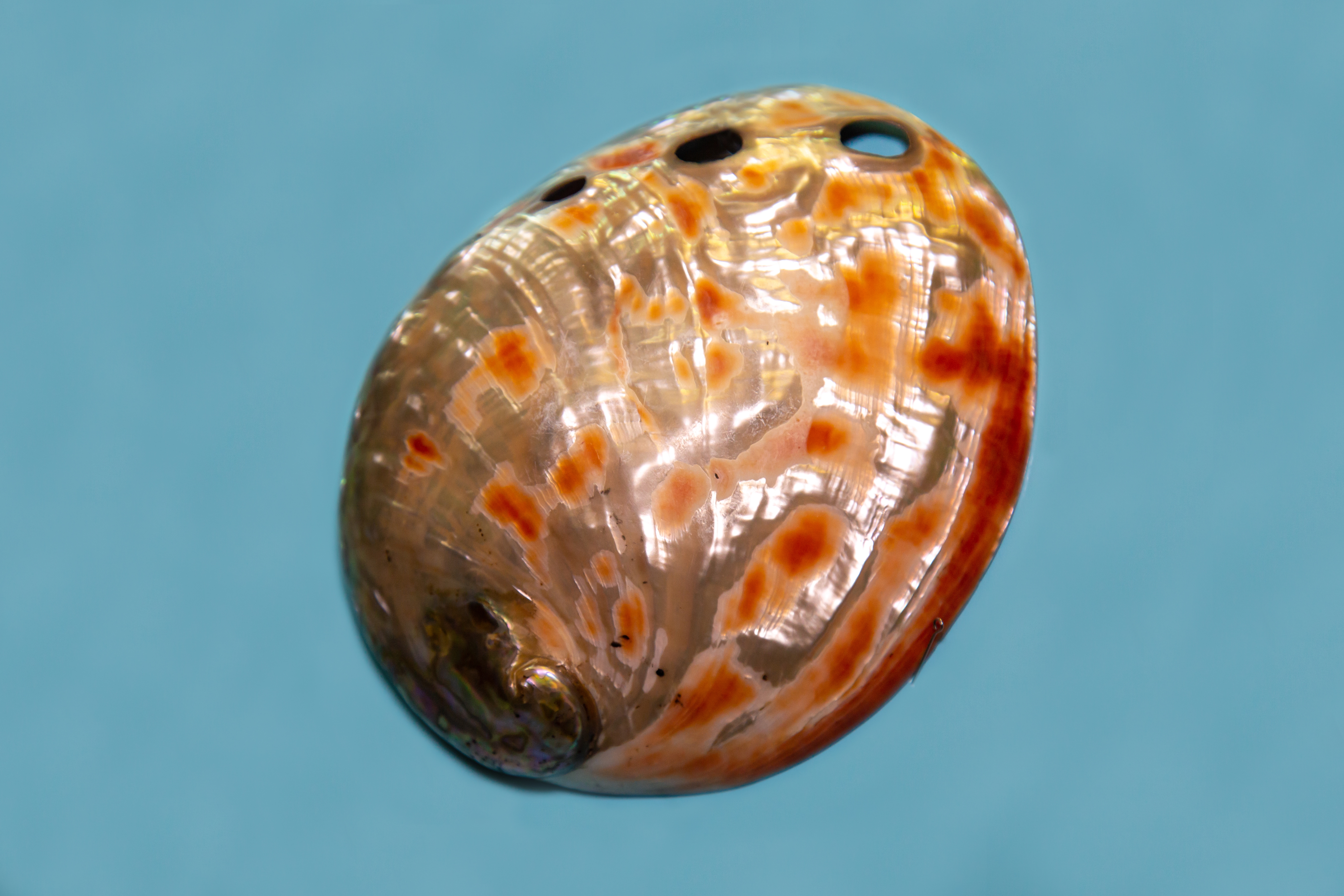Red abalone
(Haliotis rufescens)

Description
Haliotis rufescens (red abalone) is a species of very large edible sea snail in the family Haliotidae, the abalones, ormer shells or paua. It is distributed from British Columbia, Canada, to Baja California, Mexico. It is most common in the southern half of its range. Red abalone is the largest and most common abalone found in the northern part of the state of California. Red abalone live in rocky areas with kelp. They feed on the kelp species that grow in their home range, including giant kelp (Macrocystis pyrifera), feather boa kelp (Egregia menziesii), and bull kelp (Nereocystis luetkeana). Juveniles eat coralline algae, bacteria, and diatoms. They are found from the intertidal zone to water more than 180 m (590 ft) deep, but are most common between 6 and 40 m (20 and 131 ft). The red abalone's shell length can reach a maximum of 31 cm (12 in), making it the largest species of abalone in the world. The shell is large, thick, dome-shaped, and usually covered with barnacles, vegetation, or other marine growth making the color and shell sculpture difficult to determine. It is usually a dull brick red color externally. Typically the shell has three to four slightly raised oval holes or respiratory pores, although specimens with no holes and others with more than four have been found. These holes collectively make up what is known as the selenizone which form as the shell grows. The inside of the shell appears polished and is strongly iridescent. A central, prominent muscle scar is easily visible in the shells of most Red Abalone, marking the location at which Haliotis rufescen's strong columellar muscle attaches. Female members of dioecious molluscan species have been known to be more common than males. In populations that experience human predation, this difference can be exacerbated, as is the case with populations of Haliotis rufescens. From 1972-1973, researchers studying red abalone populations at Point Cabrillo Lighthouse Station and Van Damme State Park found that the level at which human predation occurs can have profound effects on the age class structure of each population. For many years, the abalone at Van Damme were heavily fished and the population structure reflected a notable lack of larger, older individuals. At Point Cabrillo, however, abalone harvesting had been halted for some time, and populations of red abalone showed the development of a natural age class structure and sex ratio.
Taxonomic tree:







